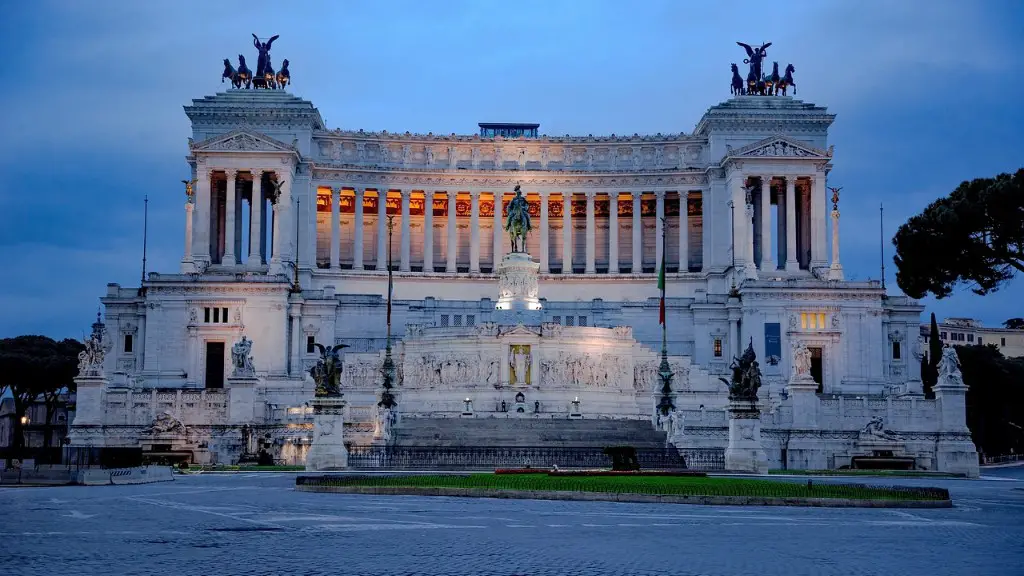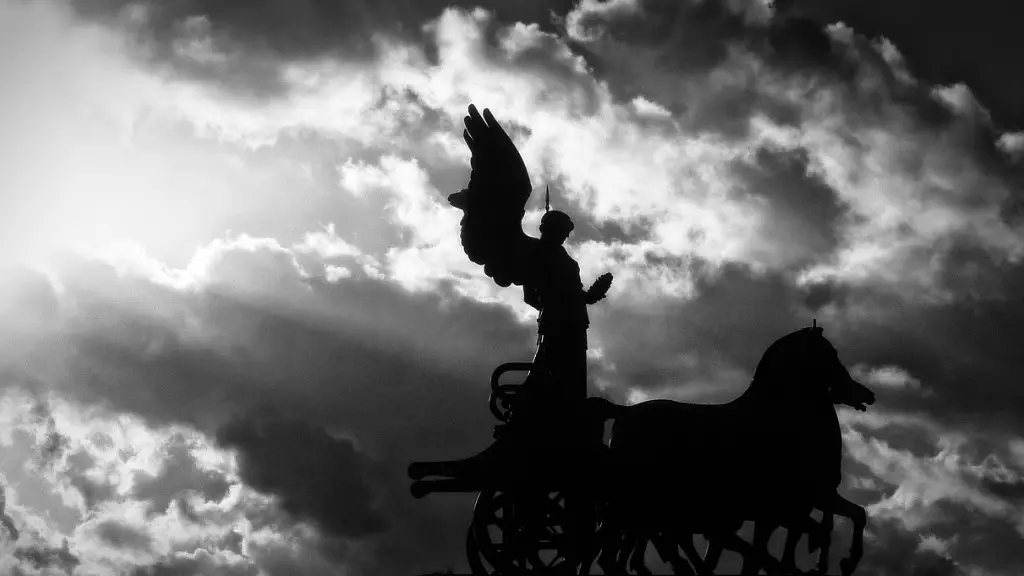Who were the Equestrian Class?
The ancient Roman political system had several social classes, the most notable being the Patrician, Plebeian, and Equestrian classes. The Equestrian Class was particularly distinct from the other classes in that its members were all of a certain type – they had to meet the financial requirements laid down by the Roman government and be equestrians in profession, or prove the pedigree and wealth of their family in order to ascend to their social rank.
Generally speaking, members of the Equestrian class had significant economic and political power over the other Roman citizens and enjoyed a privileged status within the Roman Republic and Empire.
The Requirements to Reach Equestrian Rank
In order to become a part of the Equestrian Class, a person had to possess certain assets. The minimum required wealth was determined by the Roman Censors, the government officials who were responsible for the census, taxation, and public works.
At the lowest end, a potential equestrian had to have at least 400,000 sesterces (the equivalent of $200,000 today), and at the highest end 1,800,000 sesterces (the equivalent of nearly $900,000 today). They also had to be ‘equestrian’, or have a profession such as arms manufacture or jewelry work, which was usually associated with equestrian rank.
The Role of the Equestrians in Roman Society
Because of their high status, the Equestrians were often politically influential and powerful, playing a major role in the political structure of the Roman Empire. They were eligible for high-level offices, including positions in the Senate, governorships, top military roles, and even the imperial throne.
Equestrians were also important economically – they were the main merchants and controlled most of the financial and economic activities in the Empire. They were also heavily involved in the production and sale of luxuries, and were often responsible for providing entertainment and public works.
The Life of an Equestrian
The life of an Equestrian in ancient Rome was generally quite affluent. Equestrians were well-dressed, wore gold jewelry, and owned luxurious homes. Moreover, they had access to the best education and the finest wines, enjoyed the most extravagant parties, and lived a life of luxury and privilege.
Most Equestrians had plenty of leisure time to spend in the pursuit of their various interests, including riding horses. Horse riding was an important part of the Equestrian lifestyle, as it was seen as a sign of prestige and power, as well as a way to display one’s skill and expertise.
The Role of Horses in Equestrian Life
Horses played a significant role in the life of an Equestrian in ancient Rome. They were not only seen as a sign of power, but also a necessity in the military, religious, and political life of the Roman people.
The Equestrian Class owned many of the finest horses and had the best-trained equestrians, who were highly regarded and respected by the general public. Equestrians also took part in chariot racing and were often entertained by horse shows, jousting, and hunting.
The Decline of the Equestrian Class
By the end of the Roman Empire, the Equestrian Class had begun to decline in power and influence. This was in part due to the rise of the Christian religion, which had a more egalitarian view of the social classes.
In addition, the centralization of political and economic power in the hands of the Emperor and the military meant that the Equestrian Class was no longer able to exert the same levels of influence and control as before. By the 4th century AD, the Equestrian Class had become almost obsolete.
The Legacy of the Equestrian Class
Despite their decline, the Equestrian Class left a lasting legacy in the Roman Empire. They were highly regarded throughout their existence, and their influence persists in modern times, as the upper classes are usually equestrians in profession or of noble birth.
Moreover, the class was associated closely with horsemanship, and many modern equestrian competitions and sports, such as polo and horse racing, have roots in the ancient Equestrian culture. The Equestrian Class was an important part of ancient Roman life, and its legacy lives on to this day.
The Impact of the Equestrian Class on Roman Society
The Equestrians had a substantial impact on Roman society. They provided entertainment, controlled economic and political power, and set the standard for the levels of wealth and luxury at the time.
Their influence was felt in all aspects of the Roman world, from art and literature to warfare and politics. However, the most notable impact of the Equestrian Class on Roman society was the introduction and endorsement of horsemanship, which remains an important part of global culture and hasbecome strongly associated with wealth and power.
The Representation of the Equestrian Class in Popular Culture
The Equestrian Class has been depicted and represented in popular culture many times. They were frequently used as symbols of power and wealth, and have been featured in works of literature, television, and film.
For example, in the popular HBO series Rome, the Equestrian Class, led by Julius Caesar and Marc Antony, plays a major role in determining the fate of the Roman Empire.
More recently, the Equestrian Class has been represented in the Star Wars franchise, in which the powerful royal guard troopers belong to an ancient and powerful knightly order equivalent to the Equestrians of antiquity.
In Conclusion
The Equestrian Class of Ancient Rome had an immense influence on Roman society and culture. As the wealthiest and most powerful citizens of their time, they played a major role in setting the standards of luxury, entertainment, and political power in the Roman Republic and Empire.
Moreover, their associations with horsemanship are still evident in modern society, and their legacy lives on in the form of literature, television, and film. The Equestrian Class of Ancient Rome will continue to fascinate historians and writers for centuries to come.


